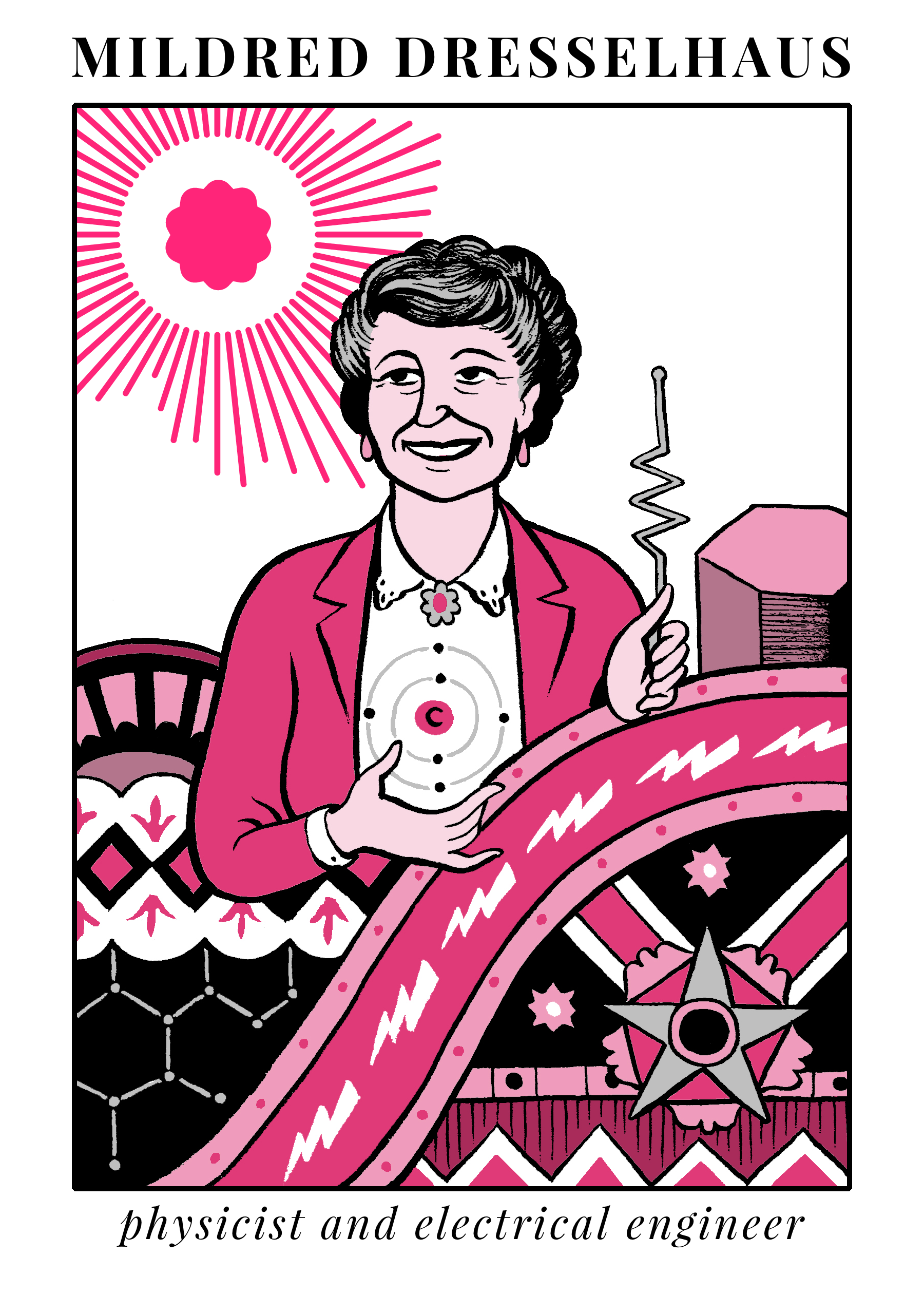3 incredible stories from the life of nanoscience pioneer Mildred Dresselhaus
The “Queen of Carbon” didn’t earn her title by playing by the rules
Matteo Farinella
Mildred “Millie” Dresselhaus passed away in 2017 after a long, vibrant career. She was a brilliant scientist who laid much of the groundwork for recent advances in nanotechnology by studying the strange properties of the carbon atom. She also paved the way for more women to succeed in science, using her career to advance the cause of equality at every turn.
Some great obituaries have been published since her death. But in researching her life, we found some incredible stories about the passion and determination that lead to her success that deserve more attention.

Illustration by Matteo Farinella
1. She built her PhD thesis experiment out of famous spare parts
According to IEEE Spectrum, Dresselhaus’s cross-disciplinary thesis on the microwave properties of superconductors (no big deal, but she found anomalies in the leading superconductivity theory of the time) was novel enough that it required tools she couldn’t buy off the shelf. Most of us would have narrowed our ideas to make them easier to research. Instead, Dresselhaus literally climbed under the bleachers at the University of Chicago and built what she needed from equipment leftover from Enrico Fermi’s famous Chicago Pile experiments.
2. She understood the importance of education from a startlingly young age
Dresselhaus grew up in a poor neighborhood in the Bronx during the Great Depression. According to the New York Times, she rode long distances on the subway by herself to get to school starting at age 6. In those days, a high school education wasn’t a given, especially for women. So when Dresselhaus heard about Hunter College High School’s exclusive advanced program for women from other children’s parents, she sent out for old entrance exams, studied for and aced the test — all on her own.
3. She changed careers multiple times — and had an impact in each field she touched
Life forced Dresselhaus to change directions several times throughout her career. Instead of seeing these changes as setbacks, she realized they were opportunities to have an impact on a diverse set of fields.
Dresselhaus’s thesis work was in semiconductors, the metals like silicon that power today’s computer chips. But when she got her first job at the Lincoln Laboratory in 1959 she switched to semimetals, because it was a less competitive field that would allow her to spend more time starting a family (an all-too-common story). This turned out to be a blessing in disguise because it allowed her to explore the properties of carbon, work that has set the foundation for the modern nanotechnology boom.
In 1990, she faced another turning point when the National Magnetic Laboratory relocated from Massachusetts to Florida. The move forced her to give up many of the techniques she had been using to investigate the properties of carbon and graphite fibers, which laid the groundwork for the creation of super-strong nanomaterials, among other uses. Undaunted, she started looking into carbon nanotubes — which could power the next generation of computers and batteries — and published a landmark paper predicting them in 1992, as well as the authoritative book on the subject in 1996.